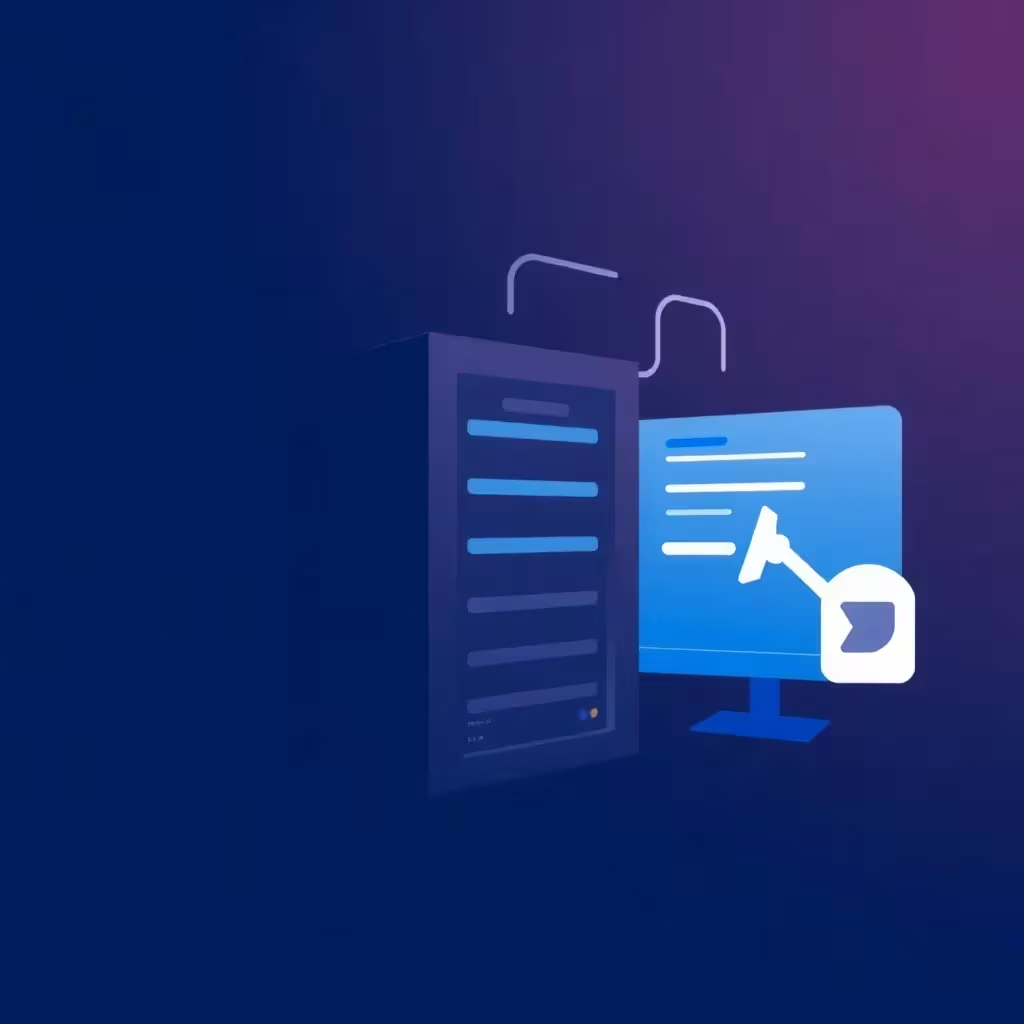Introduction to headless content management systems
In the rapidly evolving digital landscape, the concept of the headless content management system (CMS) is becoming increasingly important. This innovative technology is revolutionizing the way companies design and manage their online presence. A headless CMS separates the back-end, where content is created and managed, from the front-end, which is responsible for presentation. This decoupling offers a number of advantages that enable flexibility, scalability and efficiency in content management.
What is a headless CMS?
The core idea of a headless CMS is to store and manage content independently of its presentation. In contrast to traditional CMS, where content and presentation are closely interwoven, a headless CMS functions purely as a content database. This content is then delivered to various frontends via APIs (Application Programming Interfaces). This means that the same content can be presented flexibly on different platforms such as websites, mobile apps, IoT devices or even smartwatches without having to recreate it for each medium.
Advantages of a headless CMS
Increased flexibility for developers
A key advantage of the headless CMS approach is the increased flexibility for developers. As the frontend is separate from the backend, developers have the freedom to use the technologies and frameworks of their choice to design the user interface. This enables faster adaptation to new technologies and trends in web design without having to change the entire CMS. In addition, companies can retain their existing systems and workflows while benefiting from the advantages of a headless CMS.
Scalability and future-proofing
Scalability is another significant advantage. With a headless CMS, companies can expand their digital presence more easily and adapt to growing requirements. As content is centrally managed and delivered via APIs, it is easier to add new channels or platforms without having to overhaul the entire infrastructure. This is particularly valuable at a time when omnichannel presence has become a necessity for many companies.
Improved security and performance
Security and performance are further aspects that can be improved by using a headless CMS. The separation of frontend and backend reduces potential attack surfaces for hackers. Performance can also be optimized as the frontend can be scaled and optimized independently of the backend. This often leads to faster loading times and an improved user experience. The improved performance can also have a positive impact on the SEO ranking, which is crucial for visibility in search engines.
Challenges in the implementation of a headless CMS
However, the implementation of a headless CMS also brings challenges. Complexity can increase as separate systems for content management and presentation now need to be managed. This may require specialized expertise and can lead to higher initial development costs. In addition, the lack of an integrated preview function, which is a matter of course in traditional CMSs, can mean a change for content creators.
Complexity and costs
The need to manage separate systems can increase the complexity of the IT infrastructure. This often requires specialized developers and can lead to higher costs for implementation and maintenance. Companies need to carefully consider whether the long-term benefits justify the initial investment.
User-friendliness for content creators
For content creators, switching to a headless CMS can be a challenge. Without integrated preview functions, new tools and workflows need to be introduced to ensure that content is displayed correctly. Thorough training and support are therefore essential to ensure the acceptance and efficiency of content teams.
Headless CMS and WordPress: a synergy
For companies that operate a WordPress website, a headless CMS offers interesting possibilities. WordPress can act as a backend CMS, while the frontend is developed with modern JavaScript frameworks such as React or Vue.js. This makes it possible to maintain the ease of use and familiarity of WordPress for content creation while taking advantage of a headless approach.
Integration of WordPress as a headless backend
By using WordPress as a headless CMS, companies can continue to use existing content and infrastructure. Separating the front end allows for the development of more innovative and interactive user interfaces that comply with the latest web standards. This can improve the user experience while simplifying content management.
Technological advantages
The use of modern JavaScript frameworks offers numerous technological advantages, including better performance, a reactive user interface and greater adaptability. These technologies enable developers to create dynamic and engaging websites that meet the needs of modern users.
SEO and headless CMS: optimization for search engines
Integrating SEO strategies into a headless CMS setup requires special attention. While traditional CMSs often offer built-in SEO tools, a headless approach may require additional measures to ensure optimal search engine optimization. This may include implementing special SEO features in the front-end or using additional tools to manage metadata and structured data.
Metadata and structured data
Managing metadata and structured data is crucial for a successful SEO strategy. A headless CMS should be able to store this information efficiently and make it available via APIs so that search engines can easily access relevant information. This includes titles, descriptions, keywords and other SEO-relevant data.
Optimization of loading times
The improved performance of a headless CMS can have a positive effect on SEO, as search engines such as Google prefer fast loading times. By optimizing the front end and using caching mechanisms, websites can load faster, which not only improves the user experience but also increases search engine rankings.
Data protection compliance in the headless CMS
Another important aspect is data protection compliance. With the increasing importance of data protection regulations such as the GDPR, companies must ensure that their headless CMS implementation meets all relevant data protection requirements. This concerns both the storage and processing of content in the backend and the way in which data is transferred via APIs and presented in the frontend.
Data security and access controls
The separation of backend and frontend requires careful implementation of security measures and access controls. Companies must ensure that sensitive data is protected and that only authorized users can access certain content. Encryption and regular security checks are essential to ensure data protection.
Consent management
Managing consent for data processing is another important aspect of GDPR compliance. A headless CMS should offer tools and functions that enable companies to manage and track user consent. This includes obtaining consent, managing opt-in and opt-out settings and documenting consent information.
Use cases for headless CMS
Headless CMS systems are versatile and offer solutions for a wide range of use cases. They are particularly suitable for companies that pursue an omnichannel strategy and need to provide content across multiple platforms.
Multichannel publishing
Companies can create content once and distribute it across different channels such as websites, mobile apps, social media and IoT devices. This saves time and resources, as content does not have to be created and managed separately for each platform.
E-commerce platforms
For e-commerce companies, a headless CMS offers the opportunity to display products and content flexibly on different sales channels. This enables seamless integration of product information and marketing content in online stores, mobile applications and physical points of sale.
Intranet and internal applications
Headless CMS can also be used to manage content in intranet and internal applications. This facilitates the provision of company information, training materials and other internal resources across different platforms and devices.
Best practices for the implementation of a headless CMS
Successfully implementing a headless CMS requires careful planning and adherence to best practices. Here are some best practices that organizations should consider:
Thorough planning and analysis
Before implementing a headless CMS, a thorough analysis of existing workflows, technical requirements and future needs should be carried out. This will help to select the right solution and ensure that the new system meets the company's specific requirements.
Modular and structured content models
The creation of modular and structured content models facilitates the reuse and adaptation of content across different platforms. This promotes efficient content management and contributes to the consistency of content.
Automation and integration
Workflow automation and integration with other systems and tools can significantly improve the efficiency and effectiveness of content management. This includes integration with marketing automation tools, analytics platforms and other business systems.
Scalable architecture
The architecture of the headless CMS should be designed to support future growth and change. A scalable architecture enables companies to easily expand their digital presence and adapt to changing requirements.
Future prospects for headless CMS
The future of content management undoubtedly lies in flexible, scalable solutions that can adapt to the ever-changing digital landscape. Headless CMS systems are an important step in this direction. They enable companies to react agilely to new technologies and customer requirements without having to rebuild their entire content infrastructure.
With the continuous development of API technologies and the increasing spread of multiple digital channels, the importance of headless CMS will continue to grow. Companies that adopt this technology at an early stage can secure a competitive advantage and successfully shape their digital transformation.
Conclusion: Headless CMS as a strategic solution
In summary, headless CMS is a powerful solution for organizations looking for flexibility, scalability and efficiency in their digital presence. While implementation can present challenges, for many organizations the long-term benefits outweigh them. The ability to create content once and distribute it across multiple channels, improved development flexibility and the ability to respond quickly to new digital trends make headless CMS a cutting-edge technology in the content management space.
Organizations considering a move to a headless CMS should carefully evaluate their specific requirements, technical resources and long-term digital strategies. With the right planning and implementation, a headless CMS can be a powerful tool to help organizations stay competitive in the rapidly evolving digital world and create innovative customer experiences.



